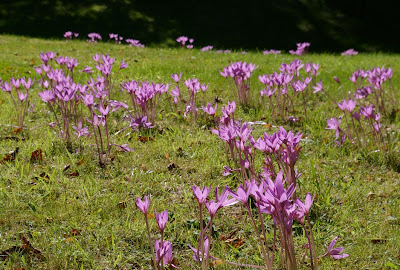 |
| Colchicum variegatum at Wisley: the most beautifully tessellated of all, but it requires alpine house or bulb frame cultivation in this country. |
 |
| Colchicum autumnale 'Nancy Lindsay' has the pale styles of the species it's attributed to, but the rich pink flowers and coloured floral tube make it very dissimilar to most forms. |
 |
| 'Nancy Lindsay' is an excellent plant for planting in grass as here at Colesbourne Park: vigorous and showy but not too large. |
 |
| Colchicum guadarremense is one of the darker -flowered Spanish members of the C. autumnale alliance, a small and pretty plant. |






























Your 'Nancy Lindsay' looks quite a bit more vigorous than mine. It makes me wonder if my plant is properly named, or if the vastly different climate I have causes it to be less vigorous.
ReplyDelete